In the complex world of AWS Networking, understanding the differences between Direct Connect and Transit Gateway is crucial for architecting efficient, cost-effective, and scalable cloud infrastructures.
In this blog, we will explore the case study of Direct Connect and Transit Gateway to uncover the most efficient and cost-effective networking solutions for your cloud architecture.
Mastering AWS Networking: Direct Connect & Transit Gateway
We will cover the following points:
- Introduction to AWS Networking – Why networking is the backbone of cloud architecture
- AWS Direct Connect – Private, low-latency connection to AWS
- AWS Transit Gateway – Central hub for connecting multiple VPCs and on-premises networks
- Direct Connect vs. Transit Gateway: Key Differences – When to choose one over the other
- Combining Direct Connect and Transit Gateway – Best of both worlds for hybrid architectures
- Case Studies – Real-world use cases and architectures
- Choosing the Right Approach – How to decide between Direct Connect and Transit Gateway
- Conclusion – Final thoughts and recommendations
Direct Connect & Transit Gateway Overview
AWS Direct Connect and Transit Gateway enable seamless hybrid connectivity between on-premises networks and the AWS Cloud. Together, they simplify networking, improve performance, and provide a scalable way to manage multiple VPCs and workloads.
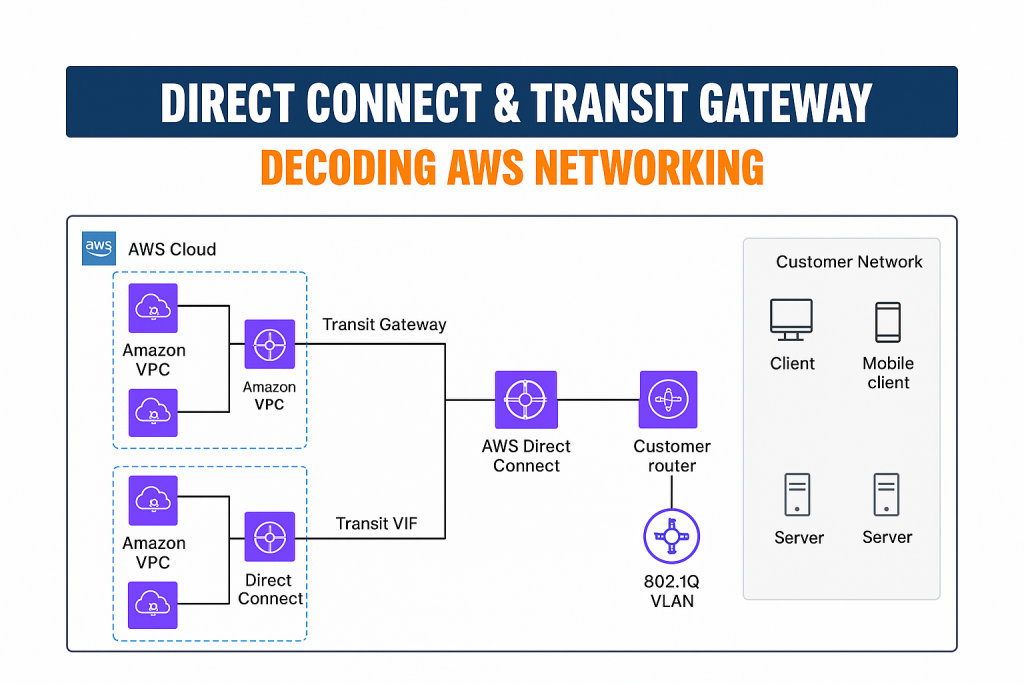
Introduction to AWS Networking
AWS Networking refers to a collection of tools and services within the Amazon Web Services ecosystem that allow customers to design and manage a cloud-based network infrastructure that is secure, scalable, and highly available. These services facilitate smooth communication and integration between AWS resources, as well as between AWS, the internet, and on-premises networks.
They include capabilities such as creating virtual networks with VPC, connecting on-premises environments through Direct Connect and VPN, managing traffic flow with Route 53 and Elastic Load Balancing, and enhancing security and privacy using Security Groups, Network ACLs, and Transit Gateway.
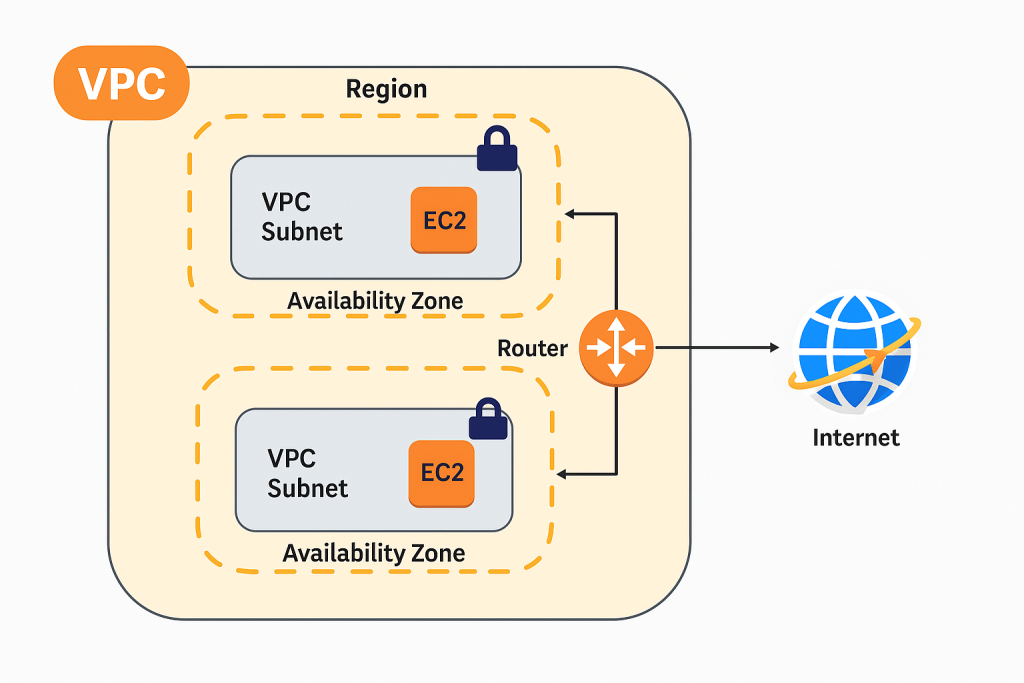
AWS Direct Connect
AWS Direct Connect allows you to set up a dedicated connection between your on-premises network and one or more Amazon VPCs. By using Direct Connect, you can lower network costs, increase bandwidth performance, and achieve a more reliable and consistent network experience compared to standard internet connections.

Benefits
- Improve application performance: Improve application performance by connecting directly to AWS without using the public internet.
- Reduce networking costs: Low rates for sending data out of AWS may lower your networking expenditures as compared to other AWS services.

AWS Transit Gateway
AWS Transit Gateway acts as a central hub for connecting multiple VPCs and on-premises networks. It eliminates the need for complex peering setups, simplifying overall network management. Working like a highly scalable cloud router, it enables you to establish connections a single time and seamlessly manage communication across your network.

Benefits
- Gain more insight and control over your edge connections and virtual private clouds.
- Enhance security on the AWS global private network by utilizing inter-region peering encryption.

Combining Direct Connect and Transit Gateways
When AWS Direct Connect (DX) is combined with Transit Gateway (TGW), it creates a powerful networking solution that leverages the strengths of both services. This integration enhances network management, boosts performance, and simplifies connectivity across the AWS ecosystem. It is especially valuable in multi-account environments and complex hybrid cloud setups. In the following section, we’ll explore the scenarios where this combination delivers the most benefits.

Scenarios Where Combining DX and TGW is Beneficial :
- Hybrid Cloud Connectivity with Centralized Management
By using Transit Gateway (TGW) as a central hub for cross-account and cross-region connectivity, organizations can pair it with Direct Connect (DX) — a dedicated, low-latency link to AWS — to connect on-premises data centers to multiple VPCs across different AWS accounts and regions. - Disaster Recovery (DR) and High Availability (HA)
The combination of DX and TGW enables seamless workload replication across multiple AWS regions and accounts from on-premises environments. This ensures high bandwidth, low latency, and improved business continuity, strengthening both DR and HA strategies. - Large-Scale Migrations and Data Transfer Projects
DX provides fast, reliable data transfer to AWS, while TGW distributes workloads across multiple destinations. Together, they simplify massive migration projects and reduce the migration window for moving large datasets or applications into AWS. - Regulatory Compliance and Data Sovereignty
DX ensures a secure, private connection to AWS, while TGW enforces routing policies to direct data to specific regions or accounts. This is especially critical in scenarios where regulations require data to remain within defined geographic boundaries.
Case Studies
1. Global Financial Services Firm
Scenario: A multinational financial services company operating in over 50 countries needs a solution to reduce latency, ensure data sovereignty, and comply with regional financial regulations. Their existing setup relied on multiple VPN connections from on-premises data centers to AWS, which was overly complex and failed to meet their performance requirements.
Solution: The company implemented AWS Direct Connect to establish a dedicated, high-bandwidth link between its on-premises data centers and AWS. By integrating Direct Connect with Transit Gateway, they created a centralized hub to route traffic efficiently between on-premises networks and VPCs across multiple AWS regions. This setup delivered low-latency application access, ensured compliance with local data residency regulations, and simplified overall network management.
2. International Media Conglomerate
Scenario: An international media conglomerate needed a robust network architecture to stream massive volumes of high-definition video content to a global audience. The challenge was to efficiently manage and distribute this content across multiple AWS regions while maintaining low latency and ensuring high availability.
Solution: To ensure high bandwidth and dependability, the conglomerate used AWS Direct Connect as a dedicated network link from its content production centers to AWS. By combining this with Transit Gateway, they were able to optimize the viewing experience for all viewers, regardless of where they were in the world, by distributing the streaming burden over several AWS regions and accounts.
Outcome: By using this strategy, the conglomerate was able to distribute material seamlessly throughout the world with low latency, fast transfer times, and higher viewer satisfaction. Additionally, it greatly decreased the operational overhead related to overseeing multi-region content delivery and simplified their network management.
3. Healthcare Technology Company
Scenario: A healthcare technology company needed a secure solution to process and store sensitive patient data in compliance with HIPAA and other healthcare regulations. Their goal was to protect data confidentiality and privacy while improving the reliability and functionality of their applications.
Solution: The company established a private, high-speed connection to AWS by integrating Transit Gateway with AWS Direct Connect, bypassing the public internet. This setup connected their AWS environment to on-premises systems, while Transit Gateway ensured the secure and compliant transfer of sensitive data across multiple VPCs and AWS regions.
Outcome: By ensuring that data was securely managed and complied with healthcare rules, the organization greatly enhanced the performance and dependability of its healthcare applications. Additionally, the system offered the scalability required to safely manage expanding data volumes and patient information.
Choosing between Direct Connect and Transit Gateways:
Choosing between AWS Direct Connect (DX) and Transit Gateway (TGW) depends on your organization’s operational goals, performance needs, and specific network requirements. While both services enhance AWS networking, they serve different purposes and are often used together to create an optimal solution rather than as alternatives.
1. Network Connectivity Needs
Direct Connect (DX): Choose DX when your primary requirement is a dedicated, private connection between your on-premises data center and AWS. It’s ideal for transferring large volumes of data or scenarios that demand high bandwidth and consistently low latency.
Transit Gateway (TGW): Choose TGW when you need to connect multiple VPCs, potentially across different AWS accounts and regions, and want simplified management of these connections. TGW can also integrate on-premises networks with cloud services through a virtual interface, offering greater scalability and flexible routing.

2. Performance Requirements
Direct Connect (DX): Ideal for applications that demand high throughput, consistent low latency, and reliable performance. It is particularly beneficial for large-scale data migrations or workloads requiring real-time data processing.
Transit Gateway (TGW): While TGW supports high throughput by routing traffic across the AWS network, its performance may be slightly less consistent compared to DX. Its main advantage lies in providing flexibility and scalability for your network architecture rather than raw performance.
3. Cost Considerations
Direct Connect (DX): Requires dedicated connections, leading to higher initial setup costs. However, due to lower data transfer rates, it can be more cost-effective for transferring large volumes of data, especially outbound from AWS to on-premises environments.
Transit Gateway (TGW): Costs are determined by the number of connections and the volume of data processed, with no upfront setup fee. TGW can be a cost-efficient choice for internal network traffic, particularly for enterprises with extensive inter-VPC connectivity across regions.
4. Scalability and Flexibility
Direct Connect (DX): The physical infrastructure has scalability limits. Expanding connectivity may require additional ports or connections, which can increase costs and take time to implement.
Transit Gateway (TGW): Offers high flexibility and scalability, allowing your network architecture to grow seamlessly as your organization expands. Adding new VPCs, VPN connections, or AWS accounts is straightforward, with no need for physical infrastructure upgrades.
5. Deployment and Management Complexity
Direct Connect (DX): Setting up a dedicated physical connection to AWS (and potentially third-party providers) can be complex and time-consuming.
Transit Gateway (TGW): Deployment is faster and simpler from a management perspective, as it operates entirely within the AWS environment. Centralized connection and routing management streamlines networking.
Conclusion:
In summary, AWS Direct Connect (DX) and AWS Transit Gateway (TGW) are essential networking services that complement each other in cloud architecture. Direct Connect delivers a dedicated, high-bandwidth link for improved speed and privacy, making it ideal for workloads with strict latency or large data transfer requirements. Transit Gateway, on the other hand, streamlines network management across multiple VPCs, accounts, and regions, offering a scalable and flexible solution for complex cloud environments.
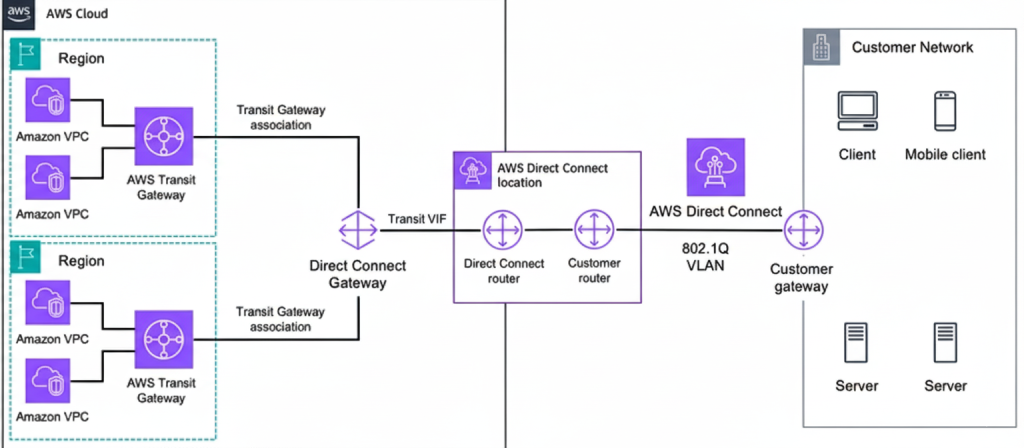
Stay tuned to Cloud Jiva for more practical AWS guides and cloud tips.

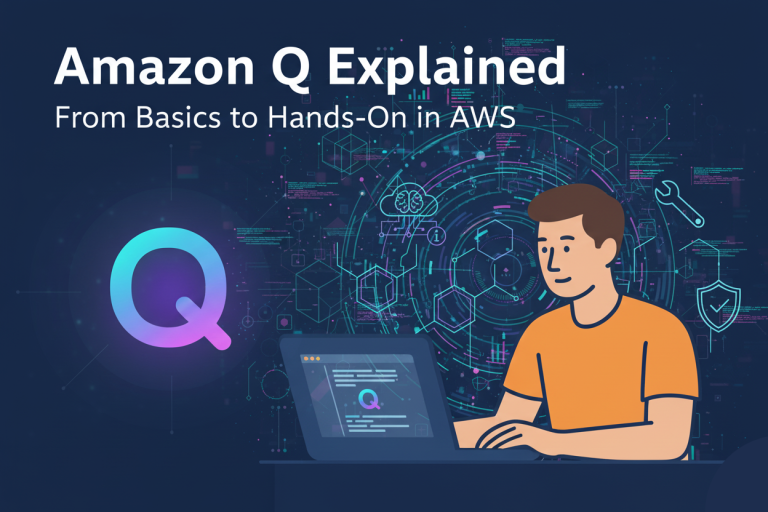
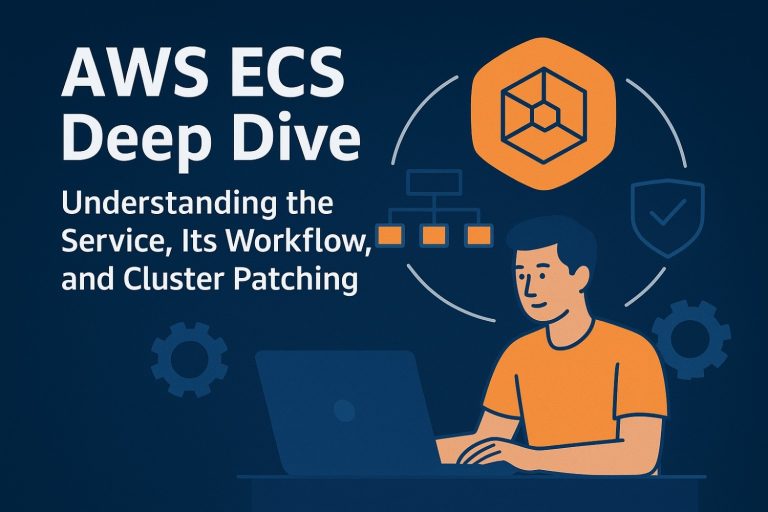
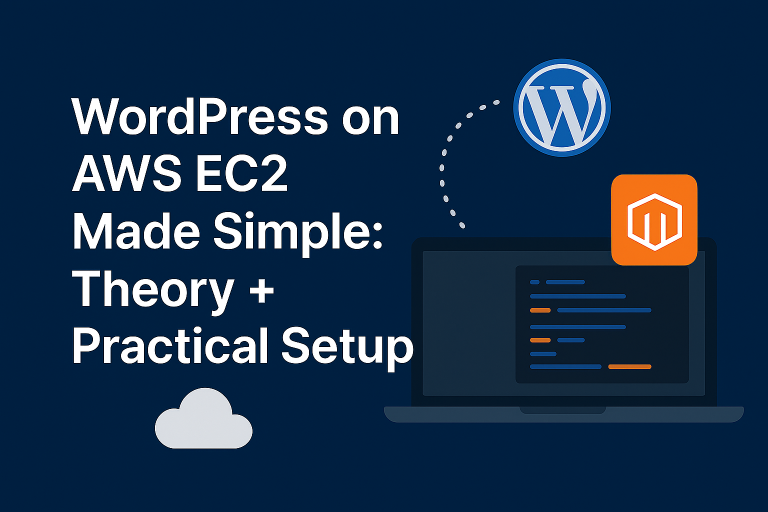
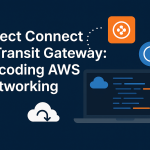
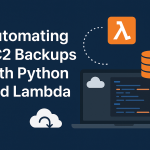
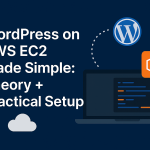

[…] Direct Connect & Transit Gateway […]